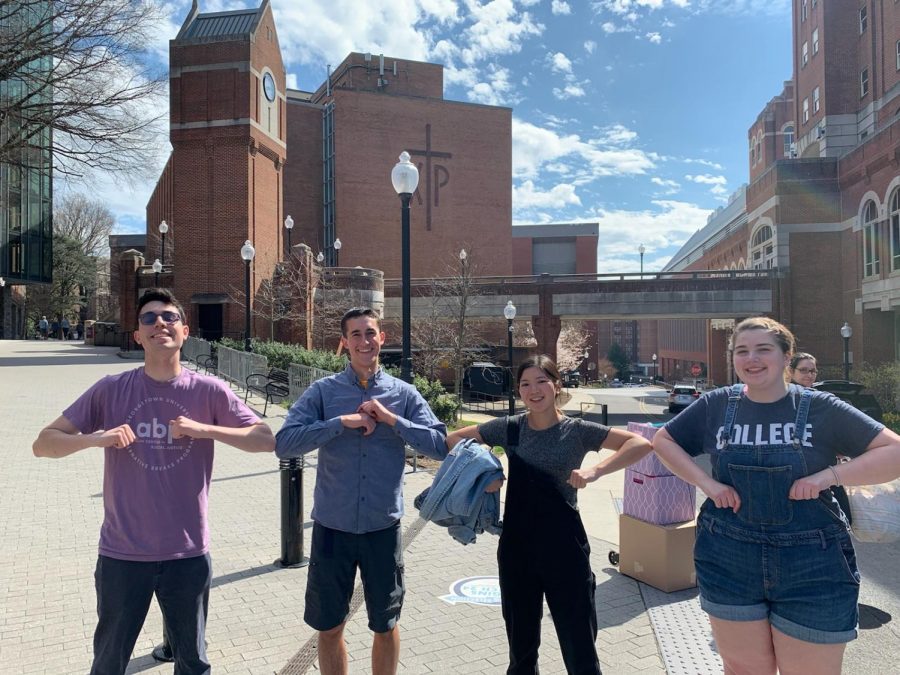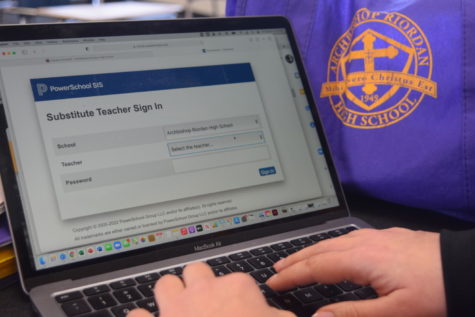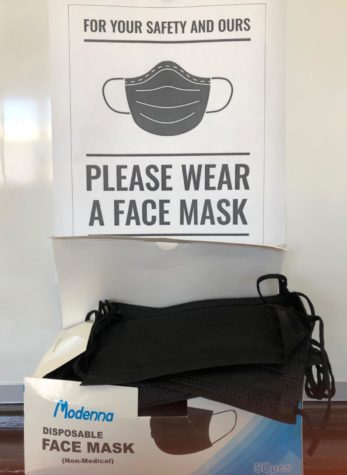COVID-19 cuts college courses short, creates ghostly campuses
Provided by Roman Peregrino '18
Roman Peregrino ‘18, cousin Brett, friends Ethan, Jaden, and Katie at Georgetown
May 8, 2020
For college students all over the world, spring break was approaching with much anticipation. Then, on March 11, 2020, the World Health Organization deemed COVID-19 a pandemic. Social Distancing became the way to “flatten the curve” for this pandemic.
In the days that followed, everything seemed to escalate at rapid speed. Primary and high schools were closing for distant learning. In addition, left stranded with more complications were over the 14 million college students who needed to arrange to pack up and move back home with as little as a week to prepare before going to online studies for spring term shutting down and planning spring term to be on line.
On March 7, 2020, the University of Washington was the first college campus to close and cancel all in-person classes. The state of Washington was one of the first states in the U.S. to be hit with cases of coronavirus.
Other campuses were wondering what would happen with their school and what their state would do. On the campus of the University of Oregon, the school assured the students that the administration was monitoring the situation and the amount of reported COVID-19 cases. Daily emails were sent to students to encourage them to make sure to continue to wash their hands and the school, even placed portable hand washing stations outside of dorms and study halls.
On March 20, the University of Portland cancelled all in-class instruction and moved to on-line.
When the announcements hit the college campuses, the logistics to move out became a rush against time for the students. Roman Peregrino ‘18, a sophomore at Georgetown University, was informed the campus was going to be shut down in an email.
“We were confused and had to make plans very quickly,” he said.
Peregrino added that he only had a few days to pack up his belongings from the dorm room that he would not be returning to.
Peregrino said, “I am extremely lucky that I have an older cousin who lives in Alexandria, Virgina. He agreed to store my things until I came back.”
Other students were not so lucky. Isabella and Miranda Dorantes, freshmen at the University of Oregon, left their respective dorm rooms anticipating their return. When they left campus for spring break, the University of Oregon was planning on in-class instruction with a three week delay. While on break in San Francisco, the official announcement was made that spring term was going to be on line and the campus was to shut down.
As shelter in places restrictions were being implemented all over the United States, students needed to collect their belongings. With all the restrictions in place, that became an ordeal for many students. University of Oregon students needed to inform the university that they would not be returning to campus for the spring and would check out of their dorms. Students were to schedule a date and time they would be on campus to be in compliance with social distancing.
The Dorantes twins informed Oregon that they would be moving out of their halls. With the help of family, they flew up to Eugene, Oregon. The flight was half full and the strong odor of bleach filled the plane. Once in Eugene, each student went to her dorm room and began to pack her belongings. The move out was completed within a day and a half. There was no one on campus.

Bella and Mia Dorantes, who moved out of the University of Oregon on March 27
Colleges such as Oregon and Georgetown have enormous school spirit and a constant buzz around campus with students going to and from classes. March Madness was to start with both schools expected to do well. Now the campus was quiet.
Perigrino stated, “Campus was a bit of a ghost town. Campus was so quiet and no one knew what to expect.”
Summer Bolcerek, a freshman studying overseas at the University of Edinburgh in Scotland, stated that the added stress of school shutting down was complicated further because President Trump was closing the borders.
“Coming home was very stressful, to say the least. After getting an email from the head of the University, I had to find a storage unit, pack up my dorm room, and find a flight within a week. Since this was at the time when President Trump was beginning to stop travel from Europe to the United States, my biggest concern was not that I wouldn’t be allowed back into the United States but that flights would be cancelled. I didn’t get to say goodbye to all my friends,” she said.
Peregrino shared Bolcereks’s sentiments. “I miss the freedom. I miss staying up late with my roommates or going out with my friends. I feel like everyone was in a groove and excited for the rest of the semester.”
So what about fall term 2020? For the University of Oregon, on April 26, President Michael Schill announced (according to the official university Instagram page) that the university intends to be “open for in-person, on-campus instruction for fall term in coordination with health authorities to safeguard the community.”
As for the other hundreds of universities across the country, it is unclear at this time, much like everything else affected by the coronavirus pandemic.










